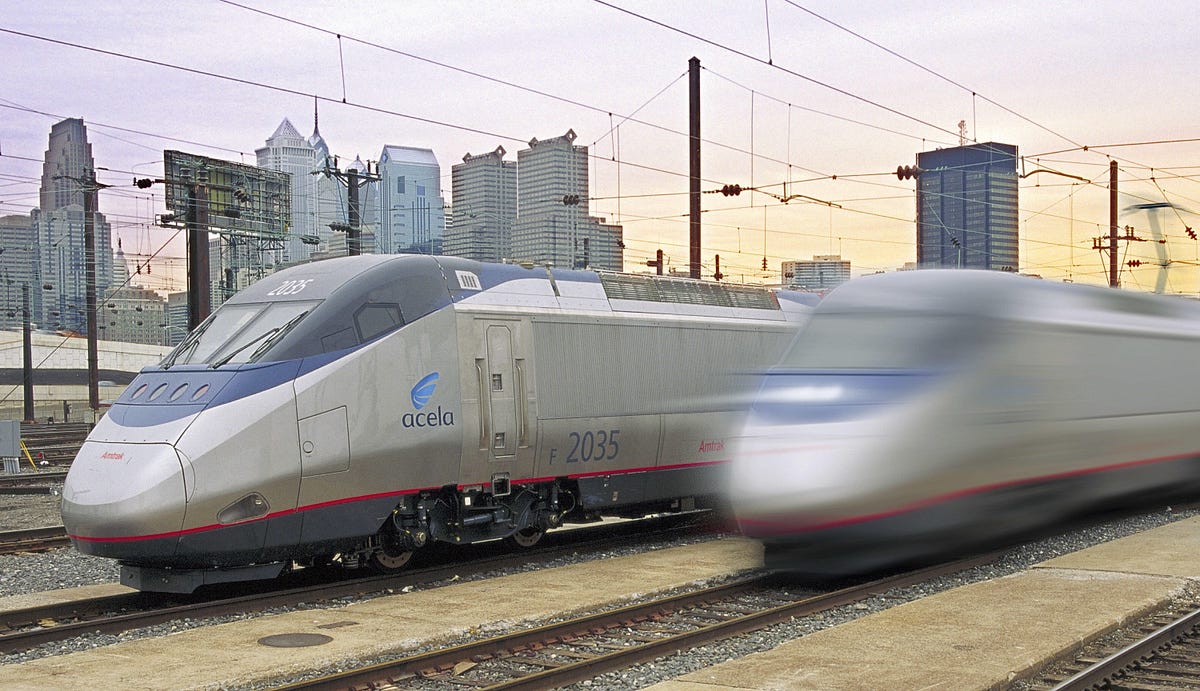High-speed trains in the US
Check out the current and future high-speed trains in the US.

Acela Express
The current Acela Express locomotives, built by a joint venture between Bombardier and Alstom.
For more about high-speed rail in the US, check out our explainer about if high-speed rail is ever going to happen in the US.
Avelia Liberty
A rendering of the upcoming Avelia Liberty, due to replace the first generation Acela Express trains. These will be built by Alstom.
Higher speed
Thanks to lighter cars and more advanced tilting tech, the new trains will have a higher top and average speed than the original Acela. They're due to enter service in 2021.
First class
A rendering of one of the first class coaches on the Avelia Liberty.
California High-Speed Rail
A rendering of what the new high-speed trains could look like in California. Since no decision has been made for specific rolling stock, this is just an illustration.
Requirements
A few things about the future trains are known, since they're part of the overall requirements for the project. Controversially, the trains must be capable of speeds of 220 mph (354 mk/h).
More power
220 mph (354 km/h) isn't impossible, multiple trains currently on the market can do that and more, but few are run higher than 200 mph in normal service as it's more economical.
Starting small
The long-term goal is to connect all of California's major cities.
Over budget
Though far over budget and behind schedule, there is still support for the megaproject, though it's waning.
N700
An N700 Series shinkansen, used throughout Japan. A modified version is planned for the Texas Central Railway.
Speeding through the heart of Texas
Texas Central is looking at the N700-I version specifically, which has a top speed of 205 mph (330 km/h).
Surfliner Charger
Though Brightline/Virgin Trains USA haven't announced what rolling stock will be on their proposed Victorville-Las Vegas route, Siemens Chargers are a likely candidate. Brightline already uses them on their Florida service, and they're built in California.
Charger speed
They have a top speed of 125 mph (200 km/h), just barely qualifying as high-speed for our purposes. We explored this train extensively during its Pacific Surfliner unveiling.
For more about high-speed rail in the US, check out our explainer on if high-speed rail in the US will ever happen.

